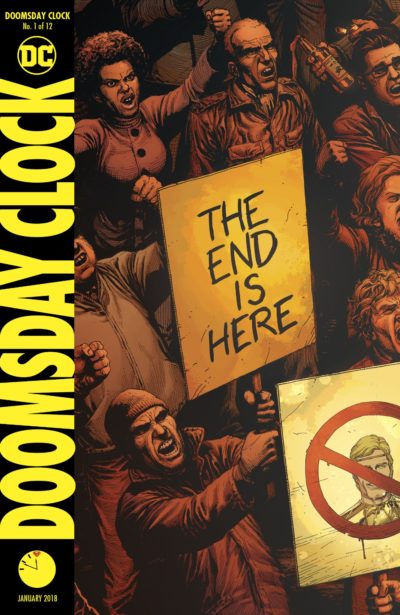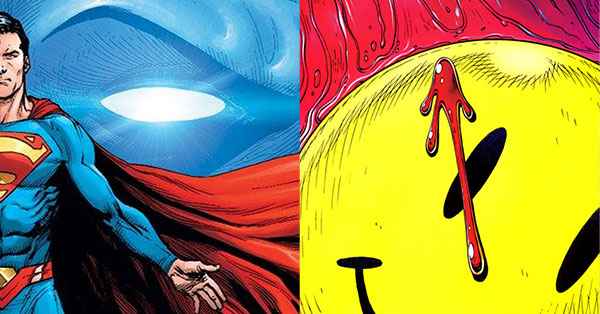It is 2017, and every classic work of art or commerce is just another chance to launch a new franchise. Everything old is flogged again.
The Handmaid’s Tale is now an Emmy-winning television show that has extended its universe both before and after the story in the classic novel. The long-running Archie comics have been turned into a nonsensical thirst-trap of a TV show about sex and murder where it is every season of the year on every day to allow for a full range of fashionable costuming.
Classic franchises are groaning under the weight of being re-franchised. It’s franchising squared. Disney is determined to pump out Star Wars movies almost as frequently as they used to release Star Wars novels back in the day and Warner Brothers has rushed a Justice League into the theatres before we’ve had a chance to care about most of the individual heroes who would form it.
There’s even news that Amazon is planning to make an ongoing series out of Lord of the Rings, ignoring the extended fart sound that was made by the bloated Hobbit trilogy and the fact that they could simply serialize the original film series across two entire seasons if it was carved into TV sized chunks.
I’m trembling in anticipation for the “long awaited” adaptations of some of my favorite TV commercials and magazine ads.
(That is only halfway a joke.)
And here we are, revisiting Watchmen, one of the comic medium’s true masterpieces, because we cannot leave well enough alone.
Yes, we already had a Watchmen movie and a Before Watchmen, but they were each one-time events. This is more than an event. It’s also a mash-up with DC’s ongoing universe that we never asked for but cannot help but watch like rubberneckers delighting in a gruesome accident. (Which says nothing for the ethical concerns, addressed at length at ComicsBulletin.)
If anything can be forgiven of being a retread of past ground, shouldn’t Watchmen? After all, it was Alan Moore’s original idea to take a dead comics universe and put its characters through a meat grinder of a final story. He might have wound up using his own original characters in the end, but he’s just as culpable of re-franchising as any of these modern examples. Moore’s career is full of these examples – MiracleMan, The League of Extraordinary Gentlemen, and even Peter Pan. He loves digging up comics corpses to reanimate as much as films studios do!
And therein lies the truth of the matter. Moore always got a pass because his work was derivative but delightful. All of these franchise sins can be forgiven if the new extension of the franchise is good. The Handmaid’s Tale won that Emmy, after all, and everyone loves an Archie with abs.
Why not revive the Watchmen? Everybody’s doing it and they’ve been doing it forever – since long before Moore did it back in 1986.
Doomsday Clock #1  & Watchmen #1
& Watchmen #1 
Doomsday Clock #1 written by Geoff Johns, drawn by Gary Frank, and colored by Brad Andersen. Watchmen #1 written by Alan Moore, drawn by Dave Gibbons, and colored by John Higgins.

Doomsday Clock is not meant to be a slavish, panel-by-panel homage to Watchmen, but the parallels are clear.
Both issues open with similar narration. Both are largely contained in a 3×3 nine-panel grid structure, and this first issue of Doomsday Clock employs a similar rhythm of breaking the grid to Watchmen #1. Both issues end with a sudden scene change punctuated by a historic quote that is followed by illuminating back matter.
There is an additional storytelling parallel that Doomsday Clock #1 ought to have picked up from Watchmen #1. Watchmen included several scene transitions throughout the issue, though each one turned out to be an extension of Rorschach’s journey through the narrative.
The first scene change in Watchmen is the most significant. On page nine, we cut from Rorschach looking at the Comedian’s photo of the old Watchmen to that same photo hanging above Hollis Mason as he enjoys a beer with Dan Dreiberg. Their conversation reveals they are the two Nite Owls, old and new.
The scene could have existed elsewhere, but the transition immediately lends it additional context: some of the Watchmen are still alive, and some of their mantles were handed down to others.
A page later, we realize this story is still the story of Rorschach, who shows up unexpectedly in Dreiberg’s house as he returns. The implication is that Rorschach, too, was a Watchman – which also tells us that the membership has changed over time, pre-explaining the upcoming scenes with Ozymandias, Dr. Manhattan, and Silk Spectre.
For all his withering critique of society in his journal, Rorschach was once involved in protecting it. We immediately realize that, in a way, his pessimism is him bemoaning his own failures. [Read more…] about Review: Doomsday Clock #1 vs. Watchmen #1